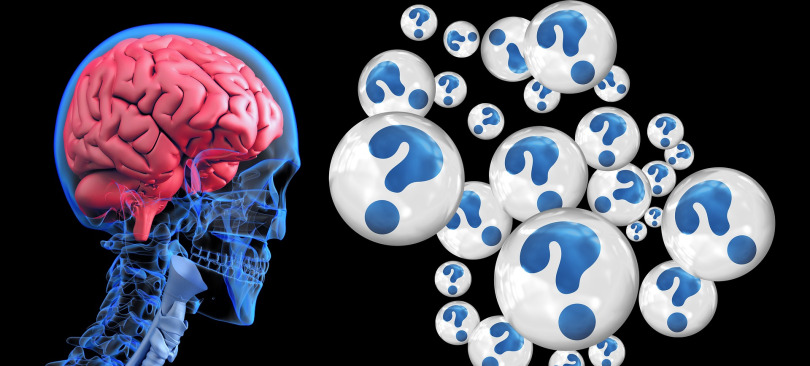When we hear something like “Both our thoughts and emotions lay in our brain”, we say “Well, this is not a big deal… not important.” The brain makes decisions and coordinates the actions of the body.
The brain adapts body actions depending on the environment, receiving external information and reacting accordingly. We have explained, for a long time now, brain functioning, strictly through its specialized cells – the neurons, which are the hardware of the brain.
But the science of genomics shows that, at a deeper level, emotions and behavior are also shaped by a second layer of brain organization, for which it was only recently that we have created the necessary tools to investigate it. This second layer is based on genes.
As respects the understanding of how genes and neurons work together, as hardware and software, in order to make possible brain functioning, we’re still at the beginning.
If we reveal in detail how this system consisting of two layers works, we can also reveal how the environment affects behavior and how we should act to improve mental health.
It’s time to admit, to realize that the activity of genes is not a background activity, but an integral part of the brain activity.
Neurons in the driver’s seat
The amazing complexity of the human brain has been disclosed in the nineteenth century, when two anatomists, Camillo Golgi of Italy and Santiago Ramón y Cajal of Spain, invented tissue – highlighting techniques, thus revealing the network of brain cells.
We now know that about 100 billion neurons connect with each other in a human brain to form complex circuits that operates based on electrical and chemical signals to create memories and coordinate behavior. This physical structure constitutes the hardware of our neural control system, which is malleable and reconfigurable by experience.
Throughout the 20th century, researchers analyzed the sugars, lipids, proteins and other molecules that build, run and repair our brain. These molecules appear to play a supporting role to the neurons that ostensibly control our behavior.
The emergence of genes
Genomics examines the entire set of genetic information contained within cells, the activities of genes and the interactions between them.
But the 21st-century science of genomics “delivered” a new surprise about the brain. Genomics revealed that the brain’s genes are more involved in regulating behavior than we previously imagined.
Genes direct the production of the above-mentioned brain molecules via intermediaries made of RNA (ribonucleic acid). RNA molecules send instructions to the cell about when and how to produce proteins needed for grow and function. Technologies developed over the last 20 years have allowed researchers to monitor with greater accuracy and increasing precision the effects of RNA in the cells. These studies have unveiled a surprising relationship between behavior and gene activity in the brain.
One of the first information on the close relationship between behavior and genes came from an unlikely source: the brain of the honeybee. Honeybees, like humans, live in complex communities and are influenced by what others around them are doing.
My laboratory discovered that behavioral changes are orchestrated by altered activity of thousands of genes in the bee brain. In some cases, the relationship between behavior and brain gene activity is so close and clear, that a computer program can accurately predict it (from the pattern of brain gene activity, to predicting behavior). It turns out that similar genomic responses are also found in many other species, including human beings. This finding reinforces the idea that neuronal genes (genes within neurons) are a fundamental force underlying behavior.
This discovery was surprising because neurons are known to adjust how they communicate with each other to generate behavioral changes via mechanisms that do not require immediate modifications in gene activity. Although we knew the molecules of the brain must be continually produced to allow neuronal circuits to rewire, as a result of age accumulated experience, neuroscientists didn’t anticipate that the relationship between brain gene activity and behavior would be so tightly coupled.
Genes in the brain exert influence
Why is there such a close correlation between brain gene activity and behavior? An idea comes from another study on bees. Honeybees aggressively and immediately respond to a threat to their hive. In nature, any prolonged delay could be fatal. This behavioral response is much faster than the time it takes to produce new molecules of RNA, suggesting the initial response is more dependent on the neural system than the genomic one. Nevertheless, in my laboratory I discovered that, hours after the threat was neutralized, the bees experience changes in the activity of hundreds of genes in the brain. The threatening experience changed them, in both molecular and behavioral terms.
Coincident with the persistent changes in brain gene activity (which we could see via changes in amounts of each individual type of RNA molecule), a persistent increase in the vigilance was also observed. And this makes sense: while on Wall Street you can’t predict future based on past results, it is a safe bet in nature to remain vigilant after experiencing a threat. Experimental manipulations that simulated the gene activity profile of a post-threatening experience bee brain made bees more aggressive, demonstrating a causal relationship between brain gene activity and behavior. The bee brain, confronted with a threat that might be recurring, has a genomic “app”, that help it respond more effectively in the future.
Two systems operating in unison
The brain’s neurons and the genomes within them, the hardware and the software, together orchestrate one’s response to a situation, which can vary from person to person. The same event (a challenge at school or at work, a new person in one’s social circle) might cause a great deal of stress in one person, and very little in another. We believe that the neural systems of such different people are differently directed by their genomic systems, perhaps as a consequence of some stressful past experiences. In a living brain, unlike a computer, the software can help can help modify the hardware, and when a new situation occurs, the functioning of the neural hardware continues to modify the genomic software. Nature has developed a clever system consisting of adaptable software and hardware that interact dynamically.
This reciprocity between genes and neurons is built on an interwoven history that goes back in time individual differences in temperament, which also influence gene activity. And while an acute stress can lead to genomic changes that provoke fear and anger for a few hours, chronic stress due to deprivation or violence can cause debilitating health effects because it activates genomic changes in the brain that do not dissipate. In some cases, it induces long-lasting changes to the chemical structure of DNA; these changes, referred to as epigenetic, might even be passed down from one generation to another.
We need to learn how to better read the genomic “record” of changes left by experience in order to predict future effects. This would not only deepen our fundamental knowledge and understanding of the brain, but it would also help us understand how socioeconomic stress get “under the skin”, to negatively affect our mood, health and well-being.
Research, including the new federal Brain Initiative, must focus on developing new technologies allowing both to measure neuronal activity with greater precision and to explore how the neuronal and genomic systems communicate with each other.
Brain does more than direct our behavior. It uses our experiences in order to create a coherent perception of the world. This world will be as unique for each of us as our personal history, with the potential to be bright, dark or filled with shadows. If we’ll become effective in understanding the code of our brain, perhaps we’ll learn to influence brain processes, bringing “light” (making more clear) into our individual universe.








